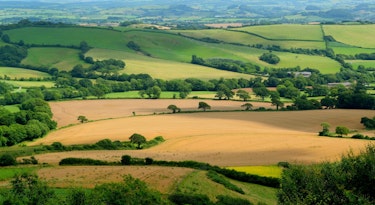Natural Capital – An Introduction
Natural capital refers to the elements of the natural environment which provide valuable goods and services to people. For example, a woodland can be regarded as a natural capital asset, from which flows valuable benefits, or ecosystem services, such as flood risk reduction and carbon capture.
Natural capital is composed of many assets, including soils, wetlands, urban greenspaces, hedgerows and so on. It is closely related to the concept of green infrastructure, which focuses on the idea that natural features should be planned and managed as networks that deliver value for people.
Background
The natural capital metaphor was first used by economist E.F Schumacher in the 1970s. It subsequently formed part of the Forum for the Future’s Five Capitals model of sustainable development. Over the last 10 years, the natural capital concept has grown in popularity as some parts of the government, business and the third sector have tried to make a stronger case for why the environment matters to people.
Role of natural capital
Human capital, manufactured capital (including the built environment) and financial capital are routinely considered in financial and management decisions. Those who are promoting the natural capital concept see it as a means to get due recognition for the environment and the way it underpins all economic activity. The aim is to ensure that we maintain not only the flow of benefits (ecosystem services) that the environment provides but also its capacity to yield these benefits (i.e. natural capital stocks).
Local assessment and accounting
Local assessment of the natural environment and functions is vital to making decisions about how to manage land and water. This assessment can take the form of maps, but also formal accounts that show the stock of natural features and how their economic value is changing over time.
Investment
Investment in natural features based on their economic value is an important new dimension of green finance. Each year, EKN runs the Nature Finance UK Conference.
Resources & Links
The Natural Capital Committee for England has produced a workbook to assist any organisation with developing a ‘plan’ for natural capital. A challenge is integration of this advice into the array of design, planning, management and valuation activities that already exist.
A variety of tools that might help with this have been produced, a selection of which are profiled in our Tool Assessor service.
The Natural Capital Protocol is a framework that has been developed for businesses to help them identify, measure and value their impacts and dependencies on natural capital.
Critique
Some have expressed concerns that the concept could cause people to place undue emphasis on monetary values. See, for example, the conference on Alternative Perspectives on Natural Capital (Institute of Chartered Accounting of England and Wales) and outputs of the Debating Nature’s Value project.
